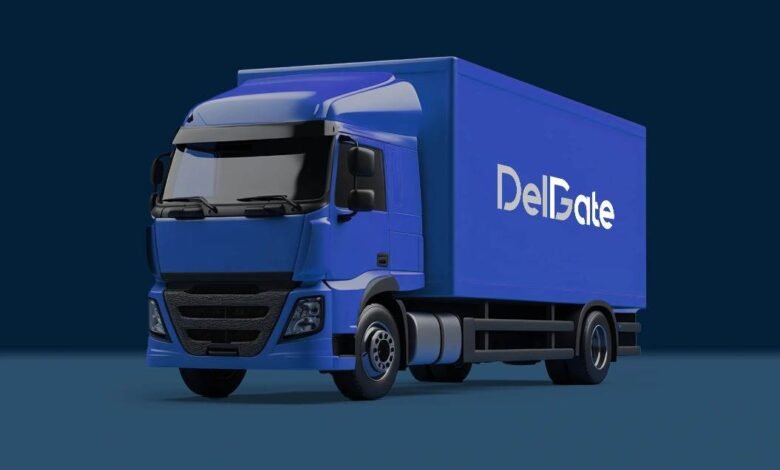Types of Cross-Docking in 3PL and Their Benefits

When discussing the types of cross-docking in 3PL, it’s crucial to understand the foundation of the concept. What is cross-docking? It’s a logistics strategy where products are unloaded from inbound trucks and directly loaded onto outbound ones with little or no storage in between. This efficient practice is often used by third-party logistics providers (3PL) like DelGate, the best 3PL logistics in Canada. Cross-docking plays a key role in faster deliveries, reduced inventory costs, and improved customer satisfaction.
What Is Cross-Docking?
Cross-docking is a supply chain technique where products are transferred directly from incoming to outgoing transportation. It eliminates the need for warehousing. The method enhances delivery speed and reduces storage needs. DelGate utilizes advanced cross-docking practices to ensure quick and accurate deliveries across Canada.
Importance of Cross-Docking in 3PL
The types of cross-docking in 3PL are central to modern logistics operations. They allow 3PL companies to reduce overhead costs and boost shipping efficiency. This company, as Canada’s top 3PL provider, integrates these techniques to offer faster service and improved tracking.
Pre-Distribution Cross-Docking
Definition
Pre-distribution cross-docking involves sorting products before they reach the warehouse. Goods are tagged with final delivery information at the supplier’s site. Once at the dock, they go directly to their final destination.
Benefits
It reduces handling time. It also minimizes the need for on-site sorting. This company uses this model to increase delivery speed and reduce labor costs.
Post-Distribution Cross-Docking
Definition
In post-distribution cross-docking, goods arrive at the 3PL facility and are held briefly until routing information is finalized. This method allows real-time demand analysis.
Benefits
It ensures inventory matches market demand. DelGate leverages this strategy to maintain stock accuracy and timely fulfillment across Canada.
Opportunistic Cross-Docking
Definition
This type of cross-docking occurs when a product needed for an outgoing order arrives unexpectedly. The product is immediately prepared for shipment without storage.
Benefits
It improves inventory flow. This company uses this strategy to fulfill urgent or last-minute orders quickly.
Manufacturing Cross-Docking
Definition
Manufacturing cross-docking consolidates inbound components for production. Items from different suppliers are grouped and sent to the assembly line.
Benefits
It minimizes storage and speeds up production. DelGate uses this for clients in manufacturing sectors needing timely part deliveries.
Retail Cross-Docking
Definition
Retail cross-docking is common in big-box stores. Products are sorted by store and shipped directly to retail locations from the dock.
Benefits
It supports just-in-time inventory. This company helps retailers reduce excess stock and improve product availability.
Distributor Cross-Docking
Definition
Distributor cross-docking consolidates products from multiple suppliers. These are sorted by destination and shipped to customers or resellers.
Benefits
It simplifies large-scale order fulfillment. DelGate uses this to help distributors fulfill high-volume orders efficiently.
Benefits of Using Cross-Docking in 3PL
Reduced Storage Costs
By skipping the warehouse step, businesses cut down on rental and storage fees. This is a significant saving for 3PL clients.
Faster Delivery Times
With fewer handling steps, goods move faster. This company uses advanced scheduling to deliver orders quickly.
Lower Labor Costs
Fewer touches mean fewer labor hours. This company keeps staffing needs minimal, passing savings to clients.
Increased Order Accuracy
Less handling reduces errors. DelGate’s efficient cross-docking ensures accurate shipments every time.
Enhanced Inventory Control
It offers real-time visibility. Clients of DelGate gain better insights into stock movement and availability.
When to Use Different Types of Cross-Docking in 3PL
Each method suits different needs. Pre-distribution works for known delivery points. Post-distribution fits demand-based models. Opportunistic is perfect for urgent requests. Manufacturing and retail versions match specific industry needs. This company advises clients on the best type based on their goals.
Why Choose DelGate for Cross-Docking in 3PL?
It is Canada’s best 3PL logistics company. Their team tailors cross-docking services to fit every client. Whether it’s retail, manufacturing, or wholesale, it ensures quick, cost-efficient, and reliable logistics support.
They use modern tech to track shipments and optimize routes. Clients stay informed and confident in the delivery process. This company sets the benchmark for all types of cross-docking in 3PL in Canada.
Cross-Docking vs Traditional Warehousing
Traditional warehousing involves storing goods for days or weeks. Cross-docking avoids this entirely. It improves delivery time and reduces storage fees. This company replaces warehouse dependence with smarter cross-docking logistics.
Industries Benefiting from Cross-Docking
Retail
Retailers get fresh stock faster with minimal storage. DelGate ensures shelves stay stocked across Canada.
Manufacturing
Assembly lines receive parts right on time. It’s precision avoids production delays.
Healthcare
Hospitals receive medical supplies urgently. Cross-docking from DelGate helps meet strict deadlines.
Food and Beverage
Perishables move quickly from dock to store. This company ensures freshness with rapid transfers.
E-Commerce
Fast order fulfillment boosts customer satisfaction. It provides a trusted partner for online sellers.
Cross-Docking Technology in 3PL
Modern 3PLs like DelGate use tracking systems, barcode scanning, and advanced routing tools. These reduce human error and enhance visibility. Their tools ensure the right type of cross-docking is always used effectively.
Final Thoughts on Types of Cross-Docking in 3PL
Understanding the different types of cross-docking in 3PL can revolutionize your logistics. Whether you need pre-distribution, post-distribution, or opportunistic methods, this company has the experience and systems to help.
From lowering costs to speeding up delivery, cross-docking is the future of logistics. And DelGate, the best 3PL logistics provider in Canada, is leading the way.
5 FAQs About Types of Cross-Docking in 3PL
What is cross-docking in 3PL?
Cross-docking in 3PL is the movement of goods directly from receiving to shipping with minimal or no storage, used by logistics providers like DelGate.
How does cross-docking benefit my business?
It cuts costs, reduces delivery times, and lowers error rates. This company helps businesses across Canada benefit from these advantages.
Which industries can use cross-docking?
Retail, manufacturing, food, healthcare, and e-commerce industries use various types of cross-docking in 3PL.
Can small businesses use cross-docking services?
Yes, this company supports businesses of all sizes with flexible cross-docking options tailored to each client’s needs.
Is cross-docking always the best option?
Not always. It depends on your inventory, demand, and delivery schedules. DelGate offers expert advice to help you choose the right method.






